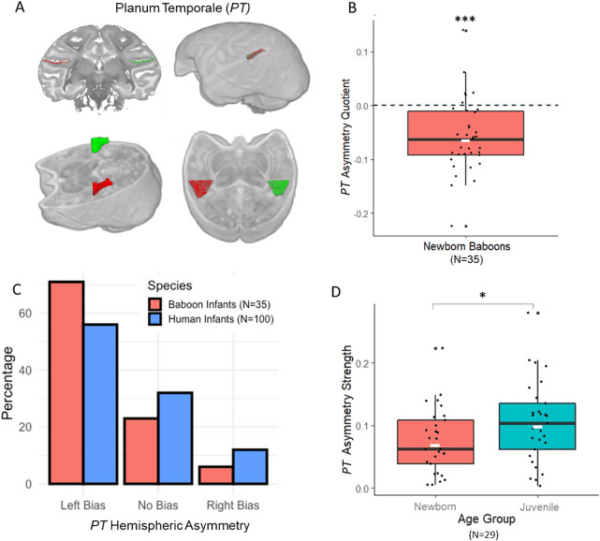|
Dear members of the ILCB,
We are delighted to send you our second newsletter, which contains new portraits, publications, projects, and lots of other useful information.
Amongst those, I’d like to draw your attention to a new postdoc call entitled “ILCB fellow”, with a deadline on May 30th, 2021. The ILCB fellow as we see it is a rather experienced postdoc with a very strong research background, who is able to conduct his or her own original project without the need to be directly supervised by one or two ILCB members (as is the case with the other postdoc call whose deadline is... today). The ILCB fellow is expected to bring to the ILCB new approaches, topics, techniques, ideas, etc. The call is available here.
We have finally decided on the date and location for this year’s ILCB retreat, which will take place at the LPL on May 25 and 26 (please register, the number of the places is limited). The goal of the retreat is to efficiently prepare the GoNoGo evaluation. The two main questions will be “What have we achieved? Where will we go?” We will shortly send you a one-page template that can be used to send us your thoughts on this matter.
You can still send us any publications or projects that illustrate the fabulous interdisciplinary ILCB adventure. The email address you can use for sharing information is
"ilcb-communication AT univ-amu.fr".
Best wishes,
Johannes |
| |
|
"La récursivité dans nos cerveaux est, en quelque sorte,
le Saint Graal de la recherche neuro-linguistique."
("Finding recursivity in our brains is, somehow,
the Holy Grail of neuro-linguistic research.")

Luigi Rizzi, le 5 Nov. 2020 dans
Complexité des structures linguistiques, simplicité des mécanismes du langage
sa leçon inaugurale de sa chaire de Linguistique Générale au Collège de France
la vidéo - le texte
|
| |
|
A language-ready brain in baby monkeys? |
|
|
|

(A) MRI images of 10-day-old baby baboon brain. The Planum Temporale, an area essential for language in humans, is larger in the left hemisphere than in the right hemisphere (green) in (B) a majority of newborn baboons, and (C) in a quasi-identical proportion to human babies. (D) Longitudinal measures in an older age class (7-10 months) show that the strength of individual PT asymmetry increases with age.
Up to now, this early cerebral asymmetry has been considered as an anatomical marker of the human baby brain’s predisposition to rapidly acquire language as soon as they are exposed to it. This result suggests the hypothesis of a common language-related feature associated to PT asymmetry between monkeys and humans.
Becker et al. (2021) NeuroImage.
|
| |
International Advisory Board | |
|
New member joins ILCB's International Advisory Board |
|
ILCB is delighted to welcome Justine Cassell as a new member of its International Advisory Board. Justine Cassell is SCS Dean’s Professor in the School of Computer Science at Carnegie Mellon University (CMU). She is currently on leave from CMU to hold the founding international chair at PRAIRIE Paris Institute on Interdisciplinary Research in AI, […] |
|
|
|
| |
|
Olivier David, research director at Inserm |
|
Olivier David is newly installed at INS since January. Olivier David is a neurophysiologist that specializes in transcranial, cortical and deep brain stimulations. He has led a research team for more than 10 years in Grenoble.… |
|
|
|
| |
|
Special Issue on Language Production and Bilingualism. In Memoriam of Albert Costa. |
|
Kristof Strijkers, Arturo Hernandez & Albert Costa. |
|
|
|
Early Left-Planum Temporale Asymmetry in Newborn Monkeys (Papio Anubis): A Longitudinal Structural MRI Study at Two Stages of Development. |
|
Yannick Becker, Julien Sein, Lionel Velly, Laura Giacomino, Luc Renaud, Romain Lacoste, Jean-Luc Anton, Bruno Nazarian, Cammie Berne & Adrien Meguerditchian |
|
|
|
|
From Psychoacoustics to Brain Waves: A Longitudinal Approach to Novel Word Learning |
|
Mylène Barbaroux, Arnaud Norena, Maud Rasamimanana, Eric Castet & Mireille Besson |
|
|
|
Continuous developmental change explains discontinuities in word learning |
|
Abdellah Fourtassi, Sophie Regan & Michael C. Frank |
|
|
|
| |
|
Understanding the Links between Language and Sensori-motor Representations in Dyslexia: Neural Basis and Impact of Comorbidity |
|
Christine Assaiante (LNC), Serge Pinto (LPL), Jean-Philippe Ranjeva (CRMBM) & Pascale Colé (LPC) |
|
|
|
Les entretiens de l’ILCB et de la Fed3C |
|
Mireille Besson & Vincent Hok (LNC) |
|
|
|
Dénominations et représentations : le mot « fille » en français. |
|
Cristel Portes (LPL) & Julie Abbou (LLF, ILCB) |
|
|
| |
|
Locating speech regions in individual brains: A sulcal-anatomical approach.
Kep Kee Loh (postdoc ILCB) and Olivier Coulon (CNRS researcher, INT)
April 22 @ 12:00 - 17:00
Read more... |
| |
ILCB is affiliated to Aix-Marseille Université, CNRS, INSERM, and Université d'Avignon
5 avenue Pasteur 13604 Aix-en-Provence Cedex 1 B.P. 80975 +33 (0)4 13 55 36 31
Copyright © ILCB 2021
| |
|